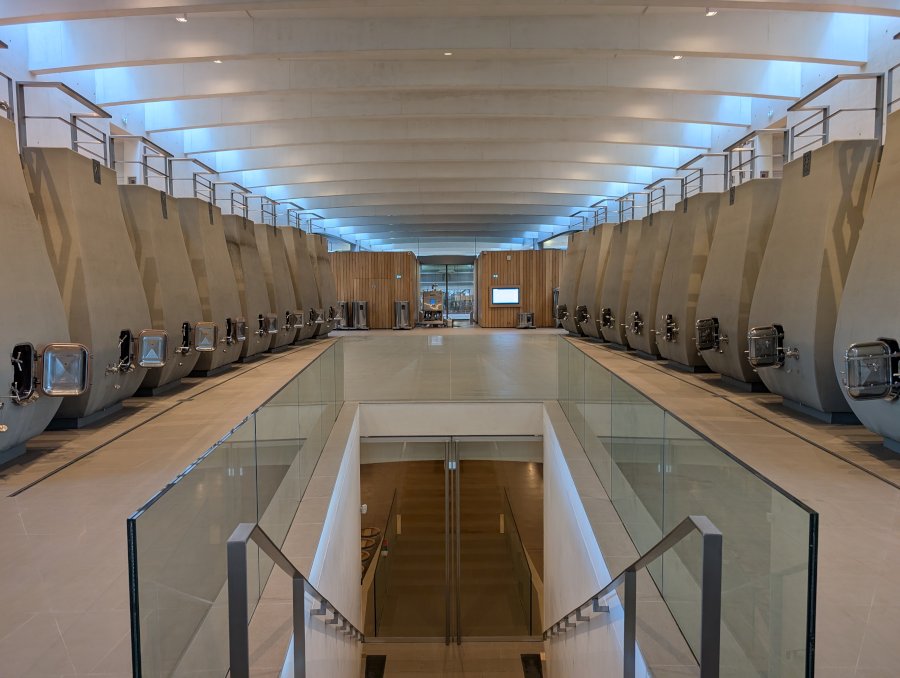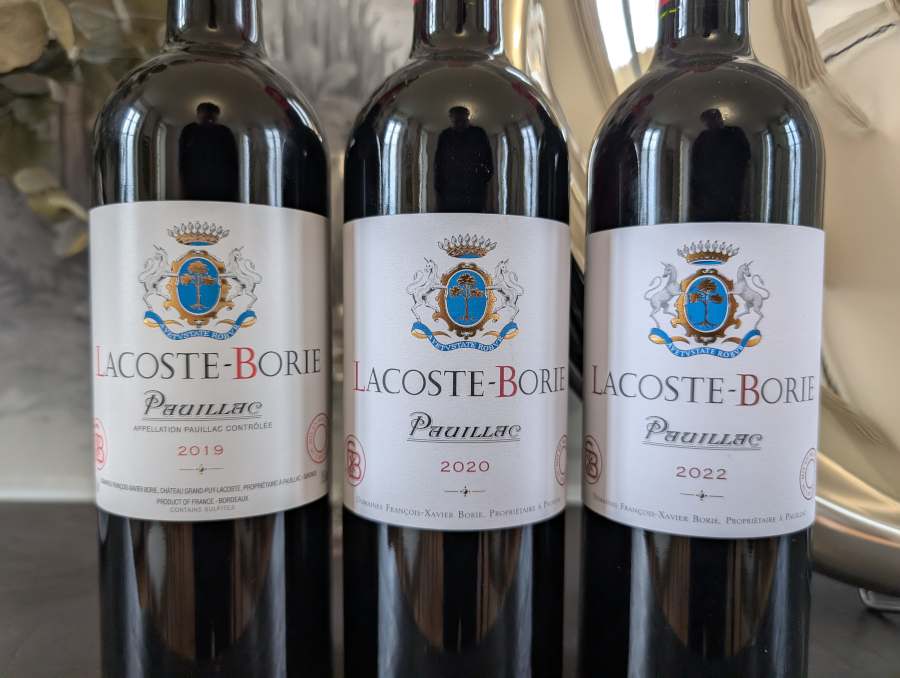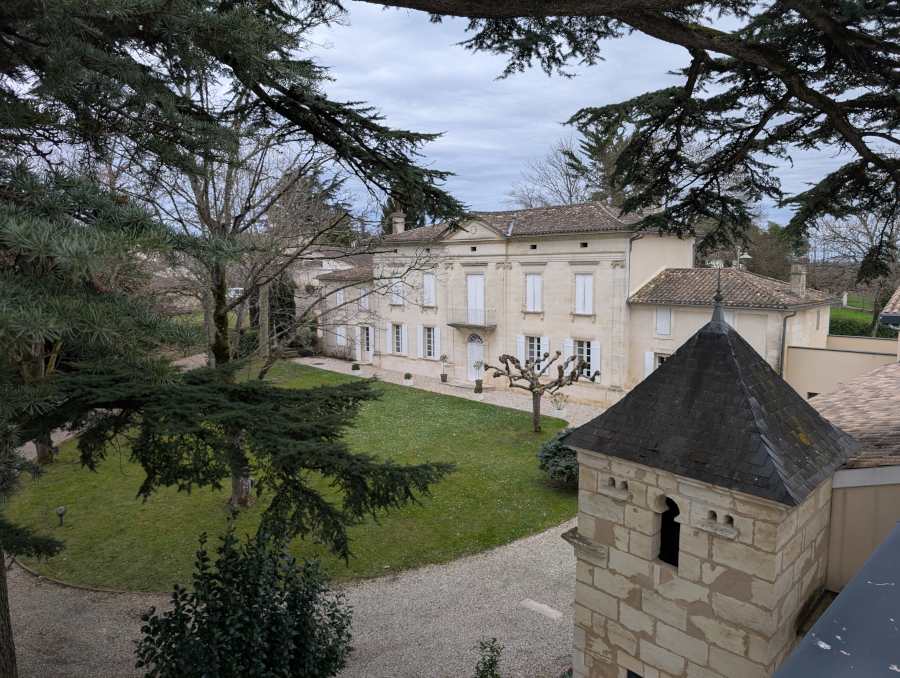An Italian, a Norwegian, and the Canadian walk into a Bordeaux winery…sounds like the beginning of a bad joke; but it’s the truth. Actually, we walked into over fifty wineries on our adventure in Bordeaux.
While Ontario was living under a blanket of snow in January, Bordeaux was seeing frost and crisp morning air with daytime highs of 5 to 7°C dipping overnight as low as minus 5°C. While both my Norwegian and Italian friends did not like the cold, I felt right at home, until I read about minus 26°C back in Niagara, and then I was glad I was not home.
On the other hand, Bordeaux winemakers were tickled pink to see temperatures cross into the negative digits; something many said they had not seen in a few years, and if it had been wintery, it was not for long. This time it endured for a good two weeks. They called it a “proper winter,” and were happy because it allowed the vines to go dormant and reset, something we have no problem with here in Canada; our difficulty is in temperatures getting too low and killing the vines.
In part one of this piece, (see Grapevine Magazine spring issue if you missed it), we were on the left bank enjoying the wines of Pessac-Leognon and Sauternes; now we head to the other side of the Gironde to explore the right bank and the wines that are dominated by Merlot blends.
Something we may not have touched upon in part one, was the mandate we had set for ourselves. Our guide (the Norwegian) was on his fifty-ninth trip to Bordeaux (one more and he gets a set of steak knives) – he regularly attends the primeur (Bordeaux’s tasting of the newest vintage) as well as other trips through the year. He had requested tastings of the 2020, 2021, and 2022 vintages. While 2022 proved to be magical, 2020 above average, 2021 is a different story, a story of wet and cool. A vintage the Italians would call “difficult”, here in Ontario we’d call it “typical,” the Bordelaise call “fresh.” And if by fresh they mean leaning towards salad fixings, then they are correct.
The left bank, due to its predominance of Cabernet Sauvignon, which needs pristine (read hotter) conditions to ripen, took the brunt of this wet and cool weather and I found the wines lean, and a little green to weedy. Over on the right bank, where Merlot is king of the chateau, there was much less of that greenness. Yes, lean was the optimal word, but some of the right bank 2021’s were more floral and pretty as opposed to that aforementioned green and weedy – which prompted me to decide that I much prefer the wines of the right bank over the left bank. This my Norwegian friend thought heretical. Sue me, but I like to go against the grain.

Let’s backpedal a bit…these days, Bordeaux is at a crossroads. It is both a well-established area rooted in the past and with a Wild West for the future. Allow me to explain. Bordeaux is the most well-known wine area in the world. Up-and-coming regions always pit themselves and their wines against Bordeaux to prove they are on equal footing. It has been done in California, Chile, even Canada (Ontario) did it back in the early 2000s when Larry Patterson put on his Judgment of Ontario tasting (styled after the Judgement of Paris) with the best of Ontario wine writers on the panel. For those that missed it, Ontario come out on top, the winery being Southbrook.
So, the bona fides of Bordeaux have been laid bare, they are second to none (when it comes to the opponent you want to beat). Ask a Bordelaise winemaker and none will tell you that Bordeaux sits on its laurels; in fact, innovation continues to ripple through the region, no matter where you bank: right or left. Whether it’s dealing with climate change in the vineyard, the newest tank styles and shapes inside the winery, or through innovative growing techniques, or reverting back, to the techniques of their ancestors. Bordeaux tries everything…but here is where the Wild West comparison comes into play…everything that is, except for selling their wine to the consumer. That boat is a slow one to change course – but that needs to happen.

For those of us who have been to a US winery in New York state, we could talk about shameless consumerism. Not just wine is sold, but glasses, napkins, bottle openers, stoppers, cutting boards, racks, anything with a grape on it. You name it, and if it has a passing connection to wine, no matter how loose or slight, it is sold within their shops. On the other hand, in Italy, where I spent another part of my early part of 2025 – a winery shop sells their wine, olive oil and maybe a trinket or two, a book featuring their winery, or talks about their region. But for the most part, it’s wine and oil; not always displayed, but it can be found not far away. A winemaker and a winery always has bottles on hand to sell the consumer. This is not always, or often, the case in Bordeaux.
“The idea of a shop on the winery property to sell wine, is relatively new,” one winery principal told me. When I pressed how new, I was told “within the last ten years.”

We dropped in on fifty-plus wineries and well over half had no way for me to buy bottles of their wine on the property; and the more well-known the winery, the more likely I could not buy a bottle. Not because they were sold out, but because they had no stock; or they couldn’t because the wine was tied up with their Place de Bordeaux negotiant. Case in point, at Grand Puy Lacoste it took fifteen minutes to locate two bottles of their second best wine Laborie 2022; while two other wineries that same week told me there were no bottles on the property to sell.
The idea of buying a bottle at the winery in their “shop” is foreign or new; many have no shop, a large office area, yes – a shop, no. It is only lately that this is something Bordeaux is trying to rectify, as their new reality settles in, and tourism to the area becomes more important. That was yet another shock. Bordeaux has not always been welcoming to tourists. But that’s another story for next time; and we’ll also touch on some more finds from the right bank.



